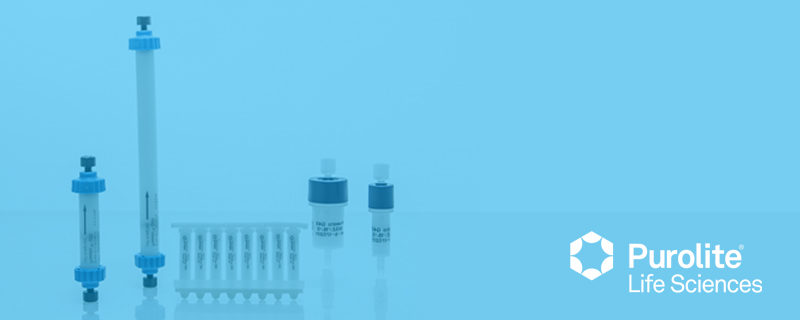
When to Choose Agarose or Methacrylic Polymer Resins– Frequently Asked Questions
Over the past decade we have seen an increase in the resin options available for chromatography. These new resins have different chemical compositions and molecules access them differently. Thus, they provide a more “fit for purpose” solution, especially for emerging therapeutics. While the increased choices are great for purification efficiency, it can sometimes be difficult to navigate the resins available, the different grades, and what each are best suited for. In an effort to clarify these resin choices and highlight two popular options, we talked to Dr. Alessandra Basso, Business Development Manager for the Lifetech™ and Chromalite® product ranges and Hans J. Johansson, Global Applications Director both at Purolite Life Sciences about the most frequently asked questions for resin selection between agarose and methacrylic and what each is best suited for.
Our questions and answers are below.
Can you explain the difference between agarose and methacrylic polymer resins?
Agarose resins and methacrylic resins differ in their chemical composition, being the agarose made of a natural polymer obtained from agar, and methacrylic resins obtained from synthetic monomers. The second main difference is the molecule access to the two resins. The internal porosity of agarose is much larger than methacrylic resins and allow the access to very large biomolecules as monoclonal antibodies which are approximately 150 KDa, whereas the methacrylic resins allow access to biomolecules below 100KDa, as peptides, proteins, oligonucleotides.
Are the same methods used for manufacturing these resins or are they different?
Both resins are manufactured either using standard suspension polymerization/emulsification or the Purolite patented technology named jetting. Jetting is a technology that allows formation of a uniform particle size distribution. It is beneficial in chromatographic applications, since separation and flow properties are improved.
Which applications fit for each resin, i.e. when would you choose agarose and when would you choose methacrylic resins?
Agarose resins are particularly suitable for biopharmaceutical applications. The absolute majority of monoclonal antibodies are purified using agarose based chromatography resins. Methacrylic resins are particularly suitable for smaller biomolecule purification, i.e. oligonucleotide, peptides, small proteins and enzymes.
Does particle size influence the decision between agarose and methacrylic polymer resins?
Both resins can be offered in a full range of particles size from 30 micron to up to 200 micron. The main driver in the selection of one resin or the other is the kind of molecule to separate.
There are different grades and particle sizes available, which applications would you recommend for each?
Small particle sizes are usually beneficial for polishing steps, where extremely high resolution is needed, whereas the larger particle size is more suitable for capture steps. Also, the volumes required are a driver in the choice of particles size, where food industry that targets very large volumes goes for larger particle size.
Have you examined your all your resins for batch-to-batch consistency?
Purolite serves the pharmaceutical industry and one of the key factors of success is the batch to batch reproducibility, since each chromatographic and purification step requires consistency in performance and productivity.
What are the recommended CIP procedures for Agarose? Same question for methacrylic?
Both agarose and methacrylic resins are stable to the most common CIP procedures in place for biopharma and food industry. They both are stable up to 1M NaOH.
What are the benefits of using methacrylic polymer resins for ion exchange?
Ion exchange chromatography done by methacrylic resins is particularly suitable in the food industry, where large volumes of resins are required, with frequent CIP and costs are key factors. Methacrylic resins can be packed easily in multi-ton scale and used for many years.
How does your agarose resin performance compare with other resins? Same question for methacrylic?
The resin development needs to assure similar or higher performances than competition, to allow customers to switch from one supplier to the other. During all resin development a performance review is done over existing products on the market. The majority of both agarose and methacrylic resins outperform existing commercial resins
What are the benefits of using methacrylic resins in ligand coupling?
The epoxy methacrylate resin is a perfect starting point to couple ligands for specific applications, i.e. multimodal, affinity or ion exchange. The binding to epoxy groups is chemically and thermally stable and operates in mild conditions.
How does porosity choice impact functionality and do you have specific porosity recommendations based on the application?
The backbone of the methacrylic resins have a porosity of about 1000Å which is optimal for a majority of biomolecules as peptides, oligonucleotides, proteins and enzymes, whereas agarose has a much larger porosity which allow the permeation of much larger biomolecules such as monoclonal antibodies.
For more information, please see Agarose Resins or Methacrylic Polymer Resins
